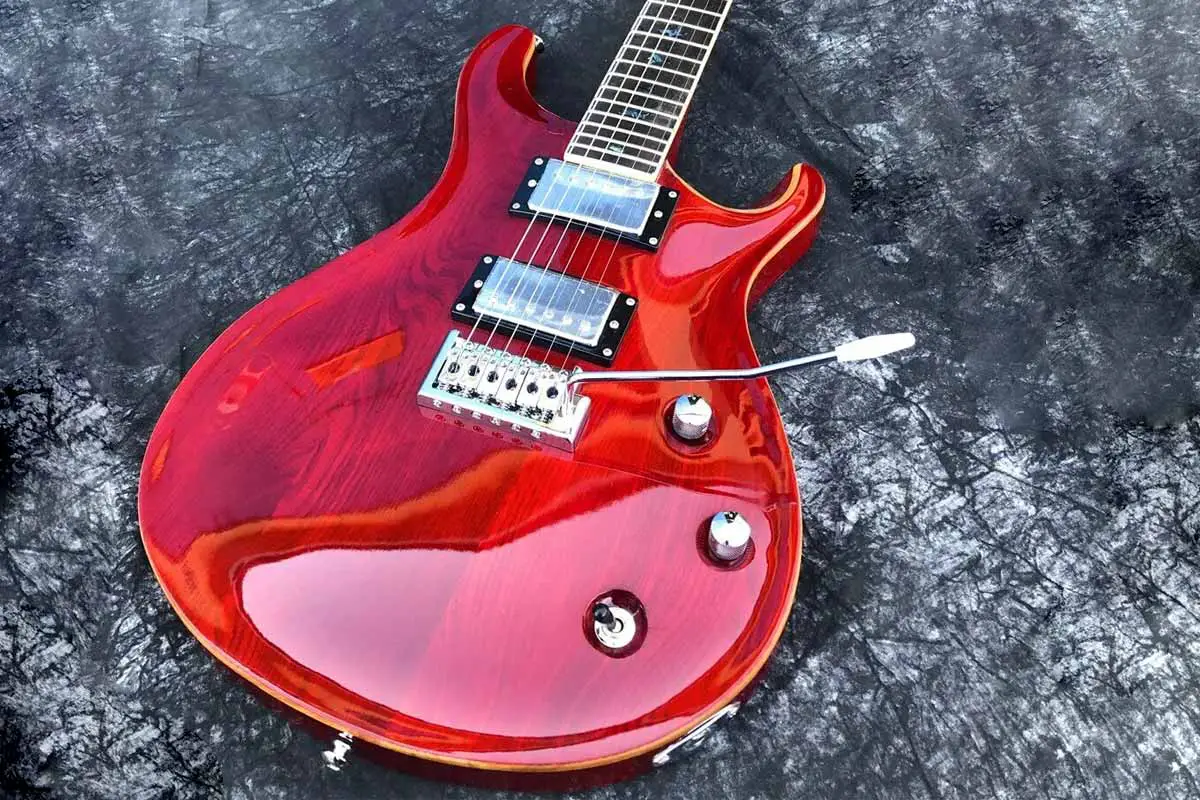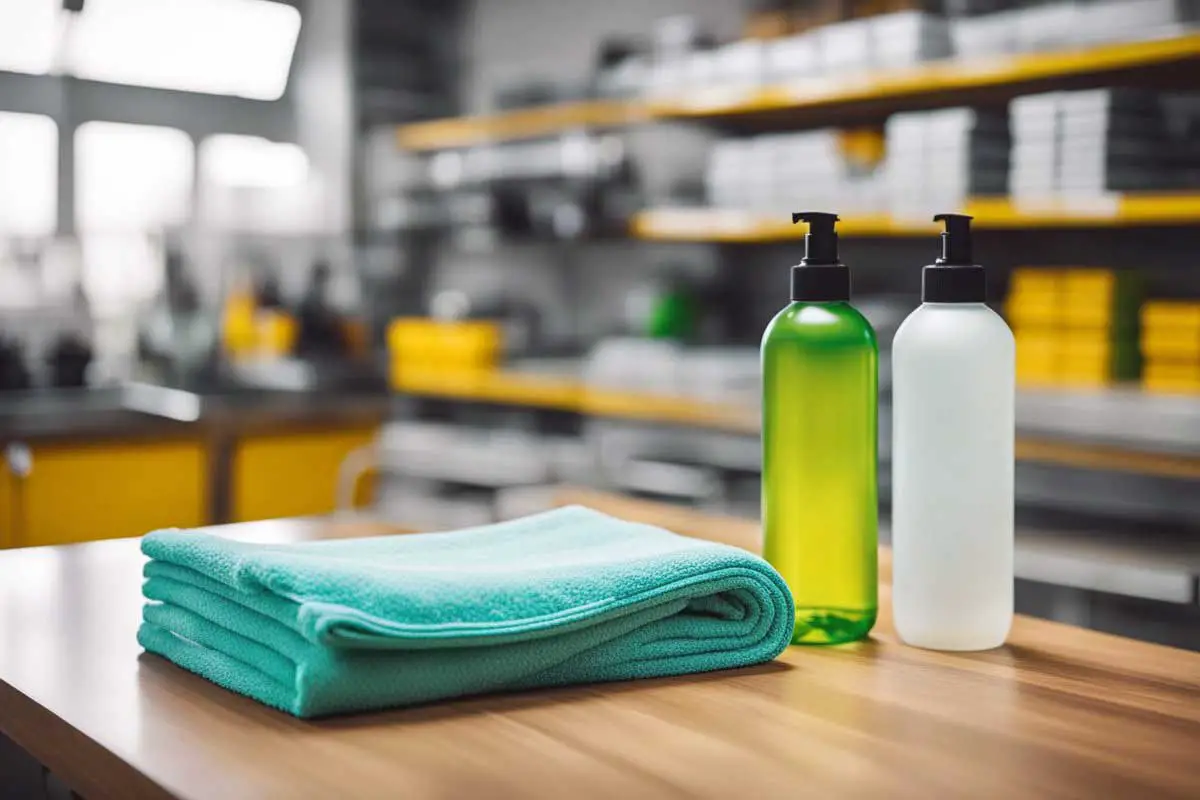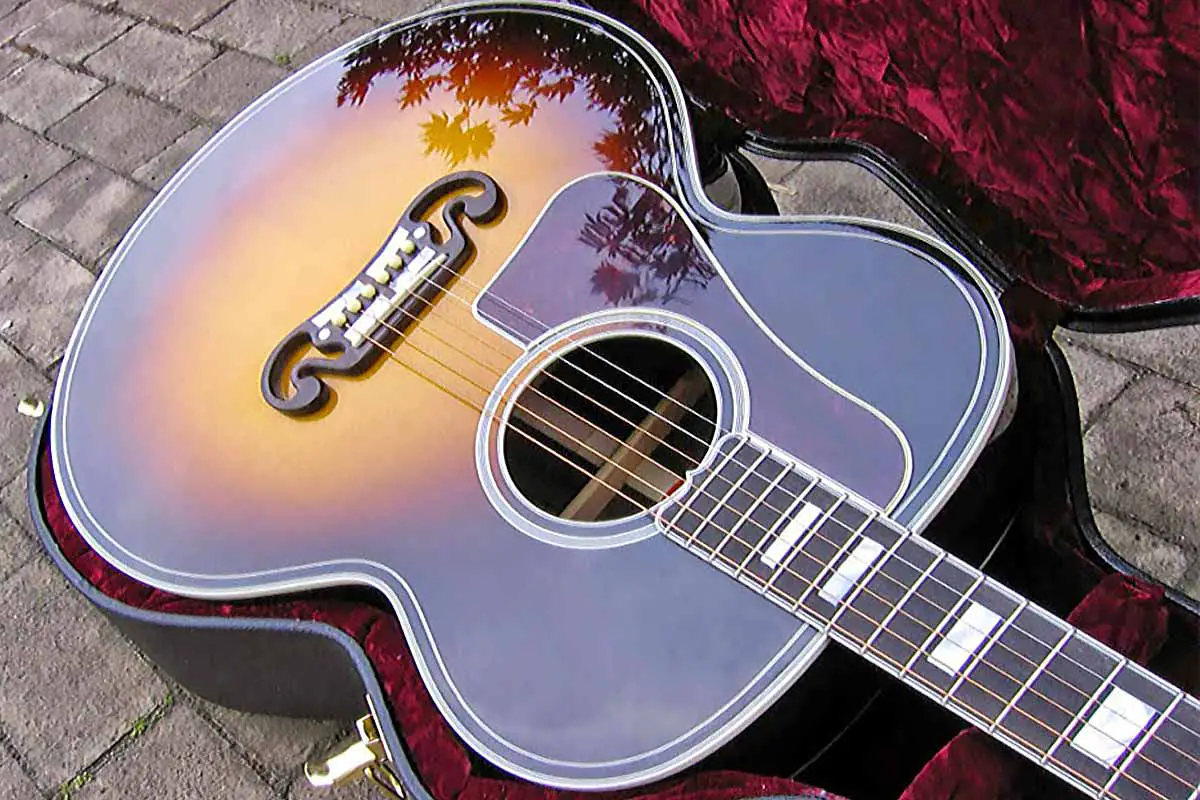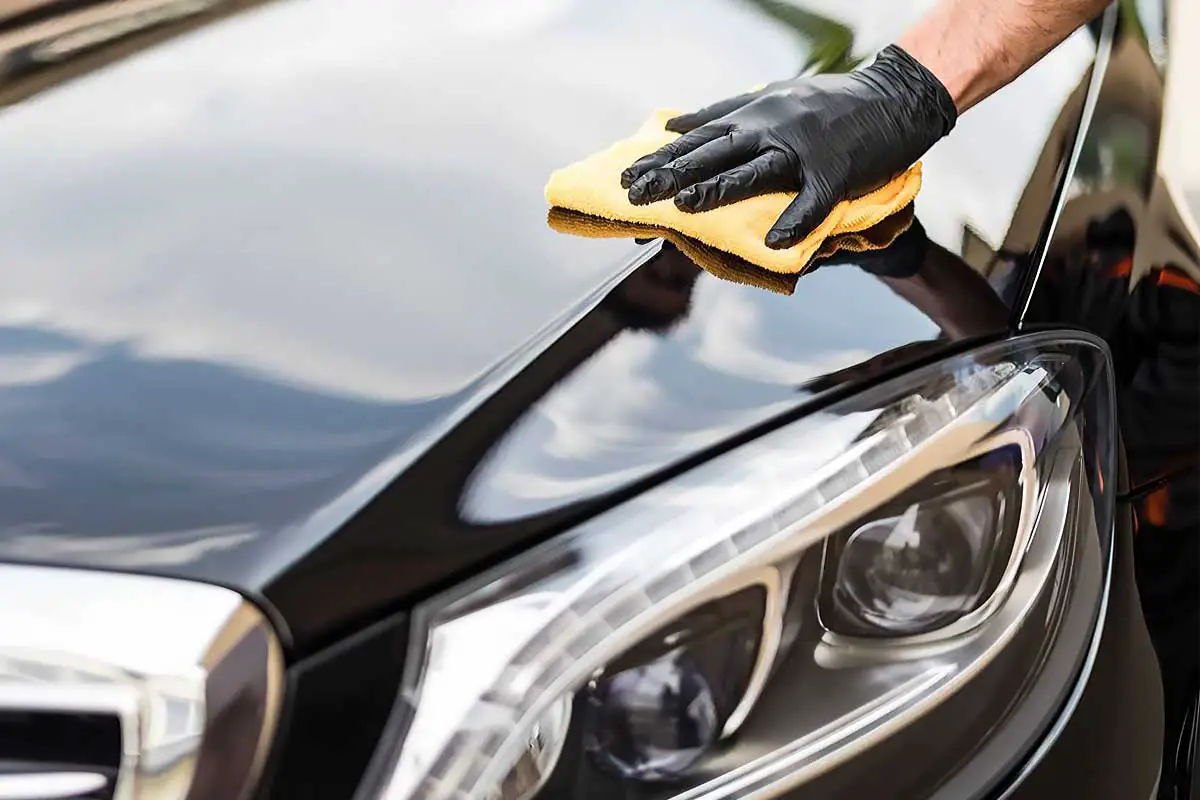Maintaining the appearance and functionality of your guitar involves regular cleaning. Over time, dust, sweat, and oils from your hands can build up on the body of your guitar, potentially affecting its tone and playability. In this article, we cover the basics for how to clean the body of a guitar, whether that be acoustic or electric.
Cleaning the body of your guitar is not just about aesthetics; it’s an important part of overall guitar maintenance and should be done regularly. Using the correct materials and techniques will ensure you don’t damage the finish or any of the delicate components of your instrument. When approaching this task, it’s vital to be gentle and thorough.
Below we show you some insights on what to use to clean your guitar finish, how to remove swirls, and how to keep the paint protected so it stays in tip-top shape.

Preparing Your Guitar for Cleaning
Before you initiate the cleaning process, it’s crucial to properly prepare your guitar to ensure a safe and thorough clean. Precision and attention to detail will protect the integrity of your guitar’s finish and components.
Gathering Cleaning Supplies
Start by assembling your cleaning kit. This should include gloves to keep oils from your fingers off the guitar, a high-quality cleaning product specifically designed for guitars, and several soft microfiber cloths to avoid scratching the finish. If you don’t have a specialized guitar cleaning kit, certain household items can be gentle alternatives.

- Cleaning solution: To break down any oils on your guitar’s finish you can use a dedicated guitar product or a very mild soapy water solution.
- Do not use harsh chemicals or even alcohol as it can damage certain finishes like Shellac.
- Microfiber Cloths: Have separate cloths for cleaning and drying to avoid cross-contamination.
- Cotton Swaps: For those hard to reach areas & crevices.
- Guitar Polish or Wax: To give your instrument some extra shine and add a layer of protection.
- Gloves: Optional but useful to keep the cleaning process clean and to protect your guitar from fingerprints.
Setting Up the Workspace
Choose a dust-free area with sufficient lighting to set up your cleaning workspace. Lay a soft blanket or towel on a flat surface to prevent scratches and to keep guitar parts from rolling away. If you’re using masking tape, apply it to any areas that you want to protect from cleaning products.
- Workspace: Ensure it’s clean, free of potential contaminants, and has ample room for you to work in.
- Lighting: Adequate lighting is necessary to spot dirt and grime. Working next to a window or near natural light is best.
Steps For Cleaning A Guitar Body (Acoustic or Electric)
Ensuring your guitar’s body is clean not only improves its appearance but can also preserve its condition. This section details the steps for thorough deep cleaning using specific products and techniques to keep your instrument in top shape.
Cleaning the Surface
Begin with a soft, dry microfiber cloth to remove dust and loose dirt from the guitar’s surface. For regular maintenance, a gentle wipe-down is often sufficient.
After a quick wipe down with a dry towel, you can then add a bit of mild soapy solution to the towel and use that to give the guitar a second wipe. The soap here will help to dissolve and remove any oil buildup that might make it feel greasy or susceptible to fingerprints. The towel doesn’t have to be soaked either, just a bit of dampness will do.
Finally you can dip a cotton swab into the soapy water to remove dust & grime from hard to reach areas. For acoustic guitars, you will generally want to avoid excessive moisture when cleaning bare wood areas such as the bridge.
Handling Tough Spots
For areas with lots of sweat, grease, or grime, you can use a vinegar & water solution and carefully rub the spot that needs cleaning. Just be sure to add the solution to the towel and not the guitar itself. Vinegar can cause corrosion on metal parts over time so you want to be mindful of that.

Polishing and Finishing
After the guitar is clean and dry, you can apply a guitar polish or carnauba wax for a protective shine. Use a clean, dry polishing cloth to work the polish in a uniform motion until the finish gleams. Refrain from over-applying products; a small amount will often suffice.
Avoid furniture polish or other household products that contain harsh chemicals or petroleum distillates. We recommend something like the Dunlop 65 or Daddario Spray Cleaner
After applying the polish, use another another side of the clean microfiber cloth to buff the body to a shine. This will remove any excess polish and bring out the luster of the guitar’s finish.
Using Car Detailing Products On Your Guitar

Car detailing techniques and products have been successfully adapted for use in maintaining and enhancing the finishes of guitars. Just as a car’s paint job requires careful cleaning, polishing, and protection, so does the finish on a guitar.
For instance, the same microfiber towels and foam applicators used in auto detailing are excellent tools for gently cleaning and polishing a guitar’s body without leaving scratches. Moreover, some quick detailing sprays and non-abrasive waxes designed for cars can also provide a protective shine on guitars.
The principles of thorough cleaning and careful application of finishing products translate well from the automotive world to the realm of musical instruments, offering guitar owners a way to keep their instruments looking as lustrous as a well-detailed vehicle.
Swirl Removers: These products are designed for cars to minimize the appearance of fine scratches. They can also be effective for your guitar’s clear coat. Apply a small amount with a soft, microfiber cloth and gently rub it in a uniform motion instead of circular.
Personally, I recommend light swirl removers like Meguiar’s Ultimate Polish, M205, or Scratch X. These are great for removing fine scratches on your finish and making it look like new. Just be sure to test them out in an inconspicuous area first.
Paint Protectants: Automotive paint protectants, such as carnauba wax or spray waxes, can provide a glossy finish on your guitar while also offering a layer of protection against fingerprints and light scratches. Use these sparingly and buff out to a high shine.
Overall, if you’re serious about your shine, check out some instructional related to car detailing where they showcase the best techniques, products, and results possible. As far as using all of these products, you want to start by first cleaning your guitar as shown above, then use a swirl remover, and finally, use a paint protector in that order.
Be mindful of the following when using car detailing products on your guitar:
| Do | Don’t |
|---|---|
| Test the product on a small, inconspicuous area. | Use products that contain harsh chemicals or abrasives like Meguiar’s 105. |
| Apply with a soft, microfiber towel | Over-apply, which could create a buildup of product or use terry towels which can introduce more scratches onto your finish. |
| Use a swirl remover first & then a protectant | Add a protectant layer and then remover it with a light abrasive such as a polish |
Remember, while these products can be useful, they are not specifically formulated for guitars, so proceed with caution. Always ensure that you use the slightest amount required to achieve the desired results, and maintain a regular maintenance routine to keep your guitar looking pristine.
Other Guitar Maintenance Articles
| Component | Related Articles |
|---|---|
| Body Finish | How to clean your guitar’s body |
| Bridge & Tailpiece | How to clean a guitar bridge |
| Fingerboard | How to clean your fretboard |
| Frets | How to clean your guitar frets |
| Pickups | How to clean pickups |
| Pots | How to clean guitar potentiometers |
| Strings | How to clean guitar strings |
| Tuners | How to clean guitar tuners |
Frequently Asked Questions
Proper cleaning and maintenance are essential for preserving the aesthetic and functional quality of your guitar. The following FAQs address common concerns you might have about cleaning the body and strings of your instrument.
What is the best way to maintain the finish of my guitar body?
To maintain the finish of your guitar body, regularly use a microfiber cloth to wipe off fingerprints and dust & use a guitar polish or paint protectant like carnauba wax to prevent fingerprints, oil, and sweat buildup. This should be done after heavy sessions of playing or when you notice your guitar starting to feel oily from normal use.
Can water be used to clean my guitar without causing damage?
Lightly dampening a microfiber cloth with water can be used for general cleaning without harming the finish of your guitar. However, it’s important to avoid excess moisture and not to let water come into contact with any unsealed or raw wood parts of the guitar.
How do I clean the strings of my guitar for optimal playability?
Cleaning your guitar strings will help remove oil and grime, extending their life and maintaining good playability. Wipe the strings down with a clean, dry cloth after each use. For a deeper clean, use a string cleaner, which can be applied to a cloth and then run along the strings.
What alternatives are there to traditional guitar polish for cleaning the guitar body?
If you prefer not to use traditional guitar polish, we recommend looking at automotive detailing products which are better designed for making things shiny & protecting that shine long-term. We recommend something like Meguiar’s Ultimate Polish to remove swirls and a carnauba wax to seal and protect your paint’s finish.
